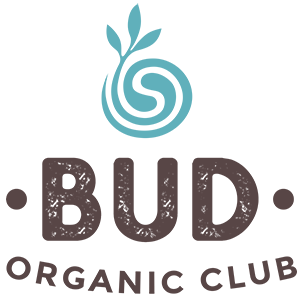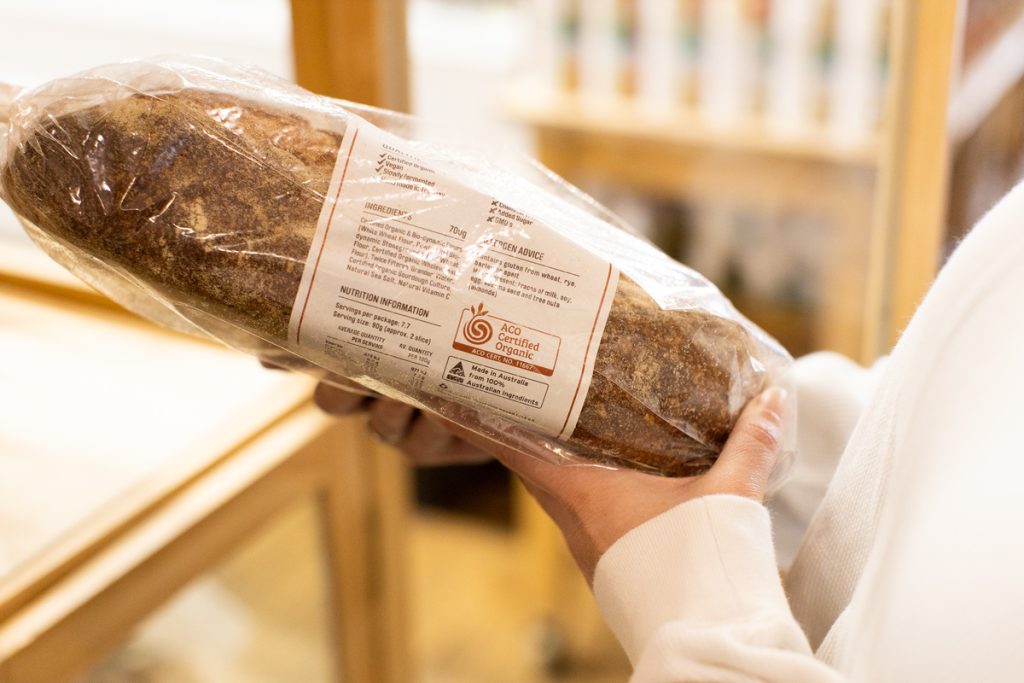The journey of bread began over 10,000 years ago and starts with the cultivation of wheat (or other grains). After being harvested, the wheat undergoes a milling process to create flour. This flour is then turned into bread and is central to the formation of early human societies, and still remains a staple in modern diets.
Organic vs Conventional
Now what’s the difference between the two, you ask?
Organic bread production embraces natural methods, prohibits synthetic inputs, and prioritises sustainable practices such as crop rotation and biological pest control. The very grain used to make organic flour is grown without any synthetic nitrogen or toxic, persistent pesticides. Meanwhile, conventional food production relies on synthetic chemicals for pest and weed management, potentially leading to pesticide residues in food. Conventionally grown wheat can be glyphosate-finished right before harvest, which means the wheat is artificially dried to make harvesting easier. For the uninitiated, glyphosate is a broad-spectrum herbicide. A recent study found nearly 60% of bread samples had at least two pesticide residues present, with some of the pesticides linked to cancer, including glyphosate[1].
Because of its environmentally friendly management and the fact that pesticides are prohibited, organic foods are generally considered as having more nutritious and safer properties when compared to conventionally produced ones.
Why Does Bread Go Mouldy?
Mould is naturally occurring and can be found virtually everywhere, so long as moisture and oxygen are present. Food items like bread are particularly susceptible to mould due to their moisture content, composition, and storage conditions. Basically, bread is moist, and mould spores love moisture. Now, you may have noticed that some commercially available bread remain mould-free for suspiciously extended periods. Well, the reason for that is…preservatives and other additives. Try this—the next time you’re at the shops, pick up some packaged bread and examine its ingredients list. You’ll likely encounter a long list, some ingredients of which may be entirely unfamiliar.
Conventionally produced bread typically relies on preservatives and additives such as emulsifiers to maintain its pillowy-soft texture and prolong shelf life. For instance, “vegetable emulsifiers” are added to soften the bread, retain its shape, and extend its shelf life. Organic bread, on the other hand, is free of these additives and is as natural as bread can possibly be. This lack of preservatives and additives is why organic bread may occasionally mould faster than conventionally produced ones. And that isn’t a bad thing—if anything, it indicates its purity; and it means that you’re only ingesting natural goodness into your body.
Traditional White Bread No More?
These recent years have witnessed a substantial shift in bread consumption habits, with health and sustainability taking centre-stage. For instance, the traditional white loaf bread has waned in popularity among increasingly health-conscious Australians, replaced by a preference for freshly baked (sometimes) unpackaged bread, including the ever-popular sourdough[2]. Sourdough is popular because it is typically more tolerable for people with gluten sensitivities due to its fermentation process. Fun fact: did you know the increase in gluten sensitivities among us modern-day humans is partly due to technology and our modern wheat varieties[3]?
Many organic varieties such as spelt and einkorn are considered older varieties and don’t cause the same coeliac response as non-organic modern varieties.
The Emergence of Organic Bakeries
While organic bread may have a shorter shelf life due to the absence of additives, adopting simple storage and consumption practices at home ensures a prolonged enjoyment of their natural goodness. Not to mention choosing organic can also minimise your exposure to chemical residues.
If the thought of consuming pesticide-, additive-, and preservative-free bread sounds good to you, give organic bread a go; and on your next bread restock, seek out certified organic logos such as the Bud[4] to guarantee its organic authenticity.
——————————————————————————————————————–
If you’re concerned about the shorter shelf life of organic bread, there are many things you can do:
- Storage. Store your bread in a cool, dry place to prevent moisture buildup, and try to avoid leaving it exposed to air.
- Slicing. Slicing your whole loaf only as needed reduces its exposure to air and helps preserve it for longer.
- Freezing. If you aren’t planning on consuming your bread within a few days, slice and freeze it in portions in resealable bags or airtight containers, and thaw the slices as needed.
- Planning. Either plan on buying smaller portions more regularly or plan to consume the bread within a few days of purchase.
- Repurpose. If you find that your bread has started to become stale, consider repurposing it into croutons, breadcrumbs, or even bread pudding.
List of References
[1] Pesticide Action Network UK. (2022, November 2). https://www.pan-uk.org/half-of-bread-contains-pesticide-cocktails-plus-download-the-dirty-dozen/.
[2] Richardson, A. (2023). Bakery Product Manufacturing in Australia (C1174). IBISWorld.
[3] De Lorgeril, M., & Salen, P. (2013). Gluten and wheat intolerance today: are modern wheat strains involved? International Journal of Food Sciences and Nutrition, 64(5), 577-581. https://doi.org/10.3109/09637486.2014.886185.
[4] https://austorganic.com/bud-guarantee/.
Organic Bakeries Glossary
Coeliac: Coeliac disease is an immune reaction to eating gluten, a protein found in wheat, barley and rye.
Emulsifier: Food additives used to help mix two substances that typically separate when they are combined.
Glyphosate: A broad-spectrum system herbicide. RoundUp is a commonly recognised glyphosate product.


